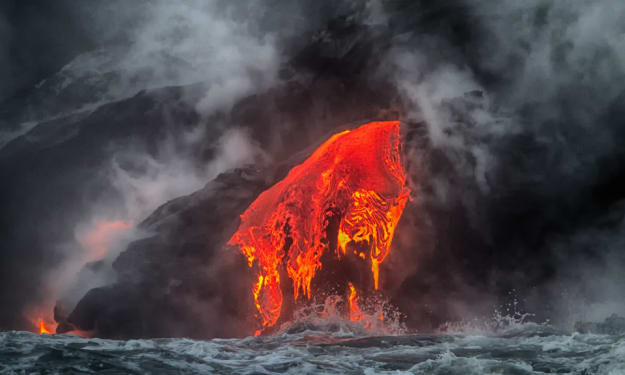NASA Predicted Giant Asteroid May Strike Earth
The Potential Impact of Bennu and Other Near-Earth Objects"

Hundreds of millions of rocks orbit the sun within the asteroid belt between Mars and Jupiter, but only some come relatively close to Earth. NASA classifies asteroids orbiting within 30 million miles of our planet as near-Earth objects, and within this group, there are particularly worrisome objects that are large enough and orbit closely enough to pose a real threat to Earth if a direct collision occurs.
Currently, NASA is closely monitoring an asteroid named Bennu, a fairly large space object that might collide with our planet in 159 years. First spotted in 1999, Bennu is likely to drift into Earth's orbit, potentially colliding with our planet on September 24, 2182. Bennu is thought to be taller than the Empire State Building, and if it hits Earth, the collision would release 1,200 megatons of energy—an amount of energy that nothing built on Earth could produce. NASA scientists believe that during Bennu's flyby in the 22nd century, there is a small chance it will pass through a gravitational keyhole, a region of space that could set it on a collision course with Earth. Bennu flies by our planet every six years and has had three close encounters with Earth in 1999, 2005, and 2011. Currently, scientists estimate the chance of Bennu hitting Earth by 2182 as 1 in 2,700, which is more than five times a person's chance of being struck by lightning. Despite the low probability, Bennu is still categorized as a "potentially hazardous asteroid" because it might come as close as 4.65 million miles from Earth.
Bennu is a carbon-rich asteroid that formed in the first 10 million years of the solar system's history, around 4.5 billion years ago. This makes it a valuable source of clues about the origin and development of the rocky planets—Mercury, Venus, Earth, and Mars—and it may contain organic molecules similar to those crucial for life to evolve. In 2020, NASA's OSIRIS-REx mission briefly touched Bennu's surface, collected samples, and propelled off the asteroid, marking NASA's first mission of this kind.
Bennu is not the only asteroid we should be concerned about; asteroid 99942 Apophis is another space body to watch. Apophis, a near-Earth object about 1,100 feet across, was discovered in 2004 and was initially identified as one of the most dangerous asteroids ever detected. It was predicted to come uncomfortably close to Earth in 2029. However, after a more careful examination of Apophis and its orbit, astronomers concluded that there was no risk of a collision with Earth for at least a century. The risk of an impact in 2029 was ruled out, as well as the potential impact from its close approach in 2036. Until March 2021, there was a small chance of a collision in 2068, but after Apophis's flyby of Earth, astronomers used powerful radars to estimate its orbit more precisely, ruling out any impact risk for at least the next 100 years.
Even relatively small asteroids the size of a house can wreak havoc if they collide with Earth, and larger ones, known as "planet destroyers," can release devastating impact energy. This makes tracking asteroids crucial for planetary protection. Our capability to protect the planet from asteroid impacts is not yet top-notch, and we would need time to prepare for such a catastrophe. The most well-known asteroid impact site is the Chicxulub crater, evidence of the collision that led to the extinction of the dinosaurs. Other visible craters, like the Barringer crater in Arizona, remind us of the destructive power of asteroid impacts.
Space rocks hit not only Earth but also the moon, Mercury, and Mars, making no rocky planet in the solar system safe from asteroid impacts. Consequently, a significant scientific effort is dedicated to finding and cataloging the asteroid population of the solar system. There are around 25,000 asteroids larger than 460 feet in diameter near Earth's orbit, capable of wiping out entire cities, but less than 50% of them have been detected and tracked. An estimated 230,000 objects equal to or larger than 160 feet in size can destroy concentrated urban areas, and fewer than 8% of these have been discovered. Tens of millions of smaller near-Earth objects larger than 33 feet across might cause surface damage, yet less than 1% have been detected.
The inner solar system presents a challenge for asteroid searches due to the sun's glare and Earth's atmospheric distortions. The Dark Energy Camera (DECam) at the Cerro Tololo Inter-American Observatory in Chile is uniquely suited for this task. Originally designed to search for dark energy, the DECam can also spot asteroids near the sun. Its ability to peer deep into the universe and capture a wide field of view makes it ideal for detecting faint inner asteroids. The DECam's survey, one of the most sensitive ever performed, aims to find objects near Venus's orbit and within Earth's orbit, providing insight into the inner solar system.
About the Creator
Enjoyed the story? Support the Creator.
Subscribe for free to receive all their stories in your feed. You could also pledge your support or give them a one-off tip, letting them know you appreciate their work.





Comments
There are no comments for this story
Be the first to respond and start the conversation.